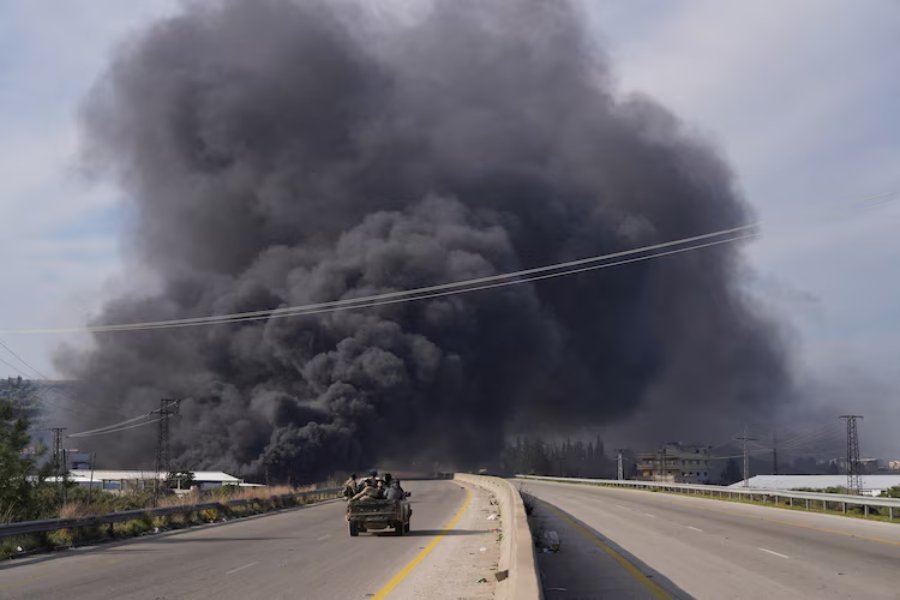Syria is once again engulfed in a wave of deadly violence as fierce clashes erupt between the country’s new government forces and loyalists to former President Bashar al-Assad. In just two days, more than 1,000 people have reportedly been killed, with civilians bearing the brunt of what observers are calling the worst bloodshed since Assad was deposed three months ago.
According to the Syrian Observatory for Human Rights, a U.K.-based war monitoring group, a staggering 1,018 people have been killed since Thursday, including at least 745 civilians. The Observatory attributes many of these deaths to what it describes as “sectarian massacres” perpetrated by fighters loyal to the new government. These fighters reportedly carried out widespread attacks in Alawite communities—minority groups previously protected under Assad’s rule—particularly in the coastal provinces of Latakia and Tartus, where loyalty to the former regime remains strong.
The initial spark for this escalation came when loyalist gunmen ambushed new government security forces in western Syria. That attack triggered a swift and deadly response from the authorities, who deployed thousands of troops and allied militias into the region. What followed has been described as a campaign of revenge killings, street executions, and widespread destruction. Witnesses from villages in the Latakia region described how armed fighters stormed Alawite neighborhoods, dragged men into the streets, and executed them in front of their families. Some residents reported that their homes were looted and then set ablaze. Others said the gunmen appeared to be seeking retribution, targeting anyone perceived to be connected to Assad’s fallen regime.
The scenes have been horrifying for civilians, many of whom now find themselves trapped in a conflict they did not choose. One resident, speaking to international media on condition of anonymity, described watching neighbors gunned down and their homes reduced to ashes. “They were killing any man they could find,” she said, visibly shaken. “They didn’t care who you were. If you were Alawite, you were a target.”
Alongside the heavy civilian toll, the Syrian Observatory confirmed that 125 members of the new government’s security forces were also killed in the fighting, along with 148 loyalist fighters. The numbers point to the intensity and scale of the battles across the western coastal areas, many of which are now under partial or total lockdown due to continued fighting.
Compounding the human suffering is the collapse of infrastructure in the affected regions. Electricity and water supplies have been cut off for two days in multiple towns and villages. Bakeries, shops, and markets have shut down due to insecurity and lack of power. Families are reportedly running out of food and medical supplies, with humanitarian access severely limited by ongoing hostilities. The deteriorating conditions have prompted warnings from aid organizations about the possibility of a new humanitarian crisis on Syria’s western coast.
In a national address on Friday, interim Syrian leader Ahmed Al-Shara condemned the violence and placed blame squarely on Assad loyalists, accusing them of attempting to destabilize the country’s fragile post-Assad transition. He claimed that the loyalist attacks were part of a broader effort to disrupt peace and fragment the nation. Al-Shara vowed that those who commit violence against civilians would be held fully accountable and urged government forces to maintain discipline and avoid excesses in their operations. He acknowledged the severity of the situation and urged citizens to remain calm, promising that the government would not allow Syria to be dragged back into full-scale civil war.
International concern is mounting in response to the bloodshed. Ann Snow, the United Kingdom’s Representative for Syria, stated on social media, urging restraint and justice. She emphasized the importance of pursuing a peaceful and inclusive political transition, warning that accountability for war crimes must remain a priority. “Deeply worrying developments,” she wrote. “Restraint and a clear path to accountability and transitional justice are essential to the peaceful, inclusive political transition all Syrians deserve.”
Diplomats and humanitarian leaders around the world have echoed her concerns, calling for urgent dialogue and an immediate cessation of violence. However, there appears to be no sign of de-escalation on the ground, with both sides continuing to mobilize fighters and reinforce positions. Analysts say the sudden resurgence of sectarian violence is particularly troubling. During Assad’s long rule, Syria’s complex religious and ethnic mosaic remained tenuously intact. But the civil war fractured that balance, and the Alawite minority, long viewed as a pillar of Assad’s regime, is now facing targeted retribution.
Experts warn that if the situation continues to spiral, it could trigger a new cycle of sectarian reprisals that would derail any chance of national unity. “What we’re seeing now goes beyond a political conflict,” said a Middle East security analyst based in Beirut. “This is beginning to look like an effort to punish entire communities. If this continues, it could ignite ethnic cleansing on a scale not seen since the peak of the Syrian civil war.”
Despite the promises of accountability and reform, trust in the new leadership is beginning to erode among many Syrians, particularly in the coastal provinces where fear and desperation dominate daily life. Residents report that many young men have fled their villages, fearing further raids, and that families are now hiding in basements or abandoned buildings, hoping to avoid detection.
With no clear end in sight, the situation remains highly volatile. Regional observers fear that if cooler heads do not prevail, Syria could find itself plunged into another prolonged war, this time not between government and rebels, but between the factions of the new Syria and the ghosts of its past.
As night falls over Latakia and Tartus, the death toll continues to climb, the streets remain deserted, and the silence is broken only by distant gunfire and the cries of the bereaved. For a country that has already endured a decade of war, peace still appears tragically out of reach.

